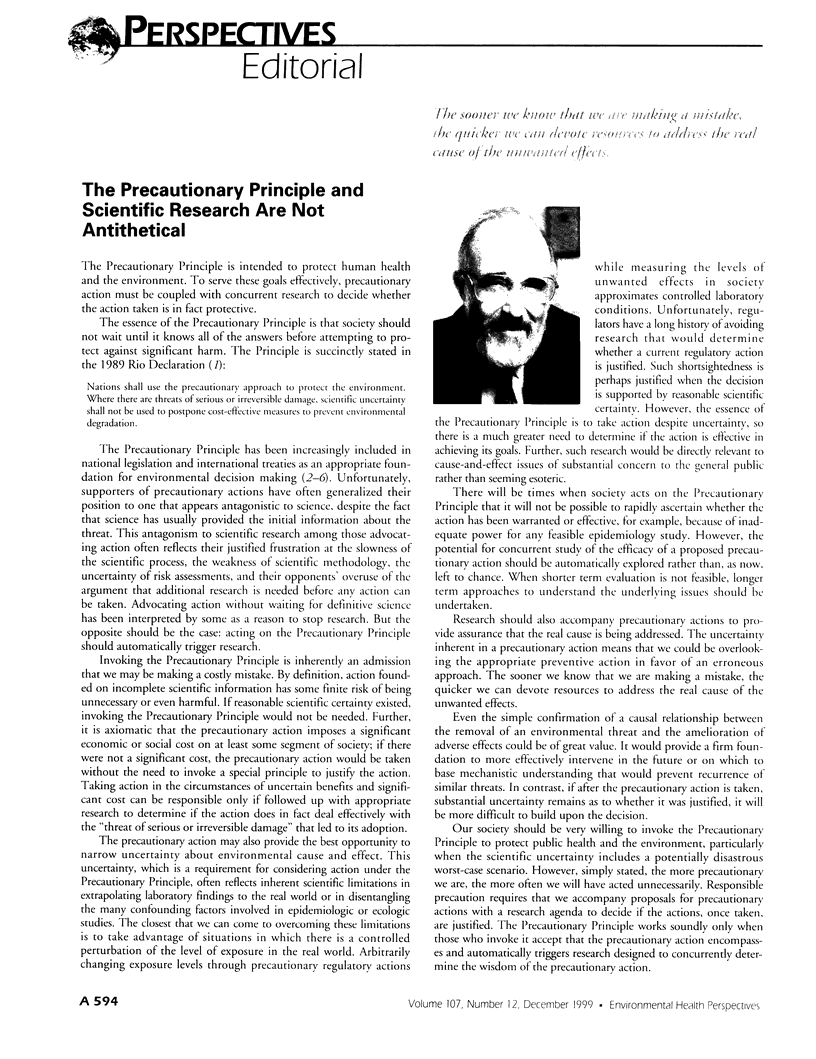Abstract
The Precautionary Principle is intended to protect human health and the environment. To serve these goals effectively, precautionary action must be coupled with concurrent research to decide whether the action taken is in fact protective.
Full text
PDF

Images in this article
Selected References
These references are in PubMed. This may not be the complete list of references from this article.
- Cap A. P. The chlorine controversy. Int Arch Occup Environ Health. 1996;68(6):455–458. doi: 10.1007/BF00377869. [DOI] [PubMed] [Google Scholar]
- Davis D. L., Axelrod D., Bailey L., Gaynor M., Sasco A. J. Rethinking breast cancer risk and the environment: the case for the precautionary principle. Environ Health Perspect. 1998 Sep;106(9):523–529. doi: 10.1289/ehp.98106523. [DOI] [PMC free article] [PubMed] [Google Scholar]
- Horton R. The new new public health of risk and radical engagement. Lancet. 1998 Jul 25;352(9124):251–252. doi: 10.1016/S0140-6736(05)60254-1. [DOI] [PubMed] [Google Scholar]
- Pugh D. M. The precautionary principle and science-based limits in regulatory toxicology: the human experience, individual protection. Arch Toxicol Suppl. 1997;19:147–154. doi: 10.1007/978-3-642-60682-3_13. [DOI] [PubMed] [Google Scholar]



